If you’re here via Google search after being diagnosed with a plantar plate tear … I’m so sorry you’re injured, that SUCKS! And I know there aren’t many bloggers who have dealt with this pesky injury. I can tell from the many comments and emails I’ve received. Between work, writing, and other Joyful Miles responsibilities such as our podcast, YouTube channel, and admin duties, however, giving personal responses has become too difficult.
So in this post, I’m going to share an update, links to previous content, suggestions, plus some previously asked questions that will hopefully provide you with more answers. Before diving in, I want to give you some kind of comfort by sharing my most commonly asked question:
Are you running again?
Hallelujah, yes!
Since recovering in June 2017, I’ve completed six 5k’s, eleven 10k’s, one 10-Miler, eleven half marathons, and two full marathons including runDisney’s WDW Dopey Challenge! I’ve yet to hit my previous half 01:57 PR, but I came close at the 2018 Frederick Half Marathon with 02:03:37, which is good enough for me!
So yes, there is hope. It took a long time and lots of patience, (around ten months worth,) to heal from my partial plantar plate tear but it is possible and I hope this brings you comfort!
And now … a disclaimer!
I am not a doctor, trainer, or nutritionalist. The following is based solely off my experience only. Joyful Miles content provides general information and discussion about fitness, health, and related subjects. The words and other content provided on this blog and in any linked materials are not intended and should not be construed as medical advice. Consult with your doctor about your own treatment plan.

Previous Blog Posts and Videos
You can find all of my plantar plate tear injury posts by going here. I’ve also vlogged about my experience over on our YouTube channel.
Timeline
Seeing as how this topic is another popular question I’m asked, here’s an approximate timeline of my injury to the best of my recollection. You can find more specific details by going to this blog post.
All Amazon links are afflilate ones. This does not cost you more but does give me a small commission to use toward Joyful Miles expenses.
- September 5, 2016: I injured my foot at the Disneyland Half Marathon and a week later, I felt pain at my second metatarsal joint as well as the feeling I was walking on a pebble.
- September 12, 2016: Since the pain wasn’t excruciating, I rested for a week. But when I got back on the treadmill for a light run, I felt the same pain.
- September 20, 2016: I had my first doctor’s appointment and X-rays. The doctor thought I maybe had a stress fracture or sprain. More rest was prescribed.

- October 13, 2016: I had my second doctor’s appointment and another round of X-rays. Based off my X-rays, the doctor thought I might have a Freiberg Infraction and asked if I wanted a cortisone shot. <<Red Flag>> THAT GOD I refused. Instead, I asked if a walking boot would help and was given one to wear for six weeks.
- October to November, 2016: After doing research, I ordered a carbon graphite insert and metatarsal pad. Based off of suggestions given in reviews, I ordered a size 8. (I normally wear an 8-1/2 or 9.)
- November 24, 2016: Feeling frustrated, I requested an MRI and later got these results: Indications of an injury that resulted in a tear of the attachment of the second plantar plate at the base of my second toe, as well as signs of bone marrow edema.
- November 26, 2016: I had my third doctor’s appointment where he recommended more rest and getting custom orthodics, but he didn’t give me the prescription or any information.
- November – December, 2016: I kept calling my doctor’s office regarding the orthodics prescription with no success. His assistant finally relayed a message from the doctor: “If I wasn’t healed by now, I’d need surgery.” <<Another red flag>>
- December, 2016: I decided to get a second opinion and searched for a new doctor since I did not believe surgery was necessary. My toes haven’t shifted at all and I felt minimal pain. Cutting my foot open just didn’t seem right.
- January 20, 2017: I saw a new doctor who confirmed my suspicion that surgery wasn’t needed. He showed me how to tape my second toe down, (for directions, watch this video.) He also suggested wearing shoes with a rocker system that offers more cushioning. After doing much research, I learned the Hoka One One early-stage meta-rockers were a great option. (I still wear them while running.)

- March 16, 2017: I saw my new doctor for the second time and had another round of X-rays taken. Since there was no improvement, he said the only thing he could do is give me a prescription for custom orthodics and I was told an office in Towson, Maryland would be contacting me soon to make an appointment.
- March – April, 2017: After never hearing from the Towson office, I called my doctor’s office several times, pushing the issue. His assistant finally allowed me to pick up the orthodics prescription and take it to a local Medstar office where I was fitted by an awesome orthodist named David.
- April 25, 2017: I vlogged about how much I HATE my new orthodics!

- April 26, 2017: I had another appointment with David. He trimmed my orthodics and suggested I make an appointment with Dr. Stuart Miller, who is in the same Medstar office. Back in September 2016, I had tried to book with him, but was incorrectly told by a receptionist that he was only seeing new patients who needed surgery. This was incorrect and I was able to make an appointment with him in late May.
- May, 2017: At my first appointment with Dr. Miller, he examined my foot, previous X-rays that I had saved on my phone, and my MRI. Good news was that he said my second doctor was correct with his treatment plan. Dr. Miller also believed my remaining pain was due to my calves being tight rather than injury, so he recommended I stretch my calves about eight times a day. He told me to continue getting used to my orthodics and to stop babying my foot … it was never going to get strong again until I started treating it like normal! Dr. Miller also gave me a referral to get a second MRI done.
- June, 2017: According to my second MRI, my plantar plate tear was HEALED and there were no more signs of bone edema, woo-HOO!!! And after seeing Dr. Miller for a second time …. I WAS CLEARED TO RUN AGAIN and I made this very emotional video!
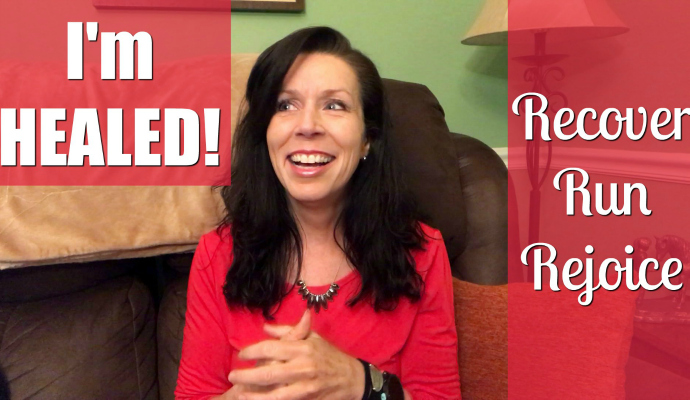
Suggestions
Before I get into the FAQ’s, here’s some tips based off lessons I’ve learned the hard way:
- Always write down any questions or concerns you may have for your doctor BEFORE your appointment. I don’t know how many times I’ve blanked out when my doctors asked if I had any questions and then smacked myself on the forehead afterward for forgetting!
- Take pictures of your injured foot periodically so you will be able to tell if your toes are starting to shift. (At one point, my second doctor thought the second toe on my left foot was shifting due to the way it curved, but this picture taken years ago at a carnival shows how my toes naturally curve … why I took a picture of my feet, I do not know.)

- Take pictures of your X-rays in case you need them for future reference.
- Don’t be afraid to get a second opinion … all doctors have different options and if one makes you uncomfortable and raises red flags, find another.
- Be persistant and your own advocate. As you can see by my timeline, there were several times when I kept calling my doctor’s office, asking questions, and seeking different medical professional opinions.
- Doing research … such as reading this article, is fantastic but DO NOT try or start any treatment without getting an accurate diagnosis and discussing it with your doctor first. I’ve received emails from folks who’ve seen my symptoms and said, “Yeah, that sounds like me,” but mimicking my steps without an accurate diagnosis, (and by that, I mean an MRI seeing as how plantar plate tears cannot be detected by X-rays alone, according to my doctor,) and your doctor’s guidance is not wise considering there are so many other types of foot injuries which require different treatments.
- Take the time to heal. If you’ve been recently diagnosed with a plantar plate tear, I’m sure it’s frustrating and disheartening seeing how it took me ten months to heal. Trust me. Those ten months were frustrating, too, but they don’t matter to me now. I’m thankful I had the patience and wisdom to not push myself too soon. I’m thankful that despite my injury, I still had a ton of laughs and made wonderful memories during those ten months with family and friends. I’m thankful for my recovery, especially after hearing from many others who were not as fortunate and either required surgery or have yet to run. This is a tough injury that requires a lot of healing time which sucks, but you must think of the big picture: a lifetime of fitness. Waiting ten months for a lifetime of running seems like nothing to me now.
Frequently Asked Questions
Here’s questions I have been asked before either via email or in comments. (I skipped many questions that were repetitive.) Please refer to this first before emailing or leaving a comment since keeping up with responses has become difficult. If I do receive a new question, I’ll insert it at the end.
Q: Did you end up getting surgery?
No, thank goodness! I was able to heal using conservative methods including wearing a boot for six-weeks, then wearing a carbon graphite insert and metatarsal pad, taping my second toe down, as well as wearing a rocker shoe such as the Hoka Arahi.
There was also lots of patience involved.
The shoe I wore is the Hoka One One Arahi that has an early-stage meta-rocker system. Click here to learn more about Hoka’s meta-rocker system.
All of the above was recommended by my doctor so discuss with yours first before trying.
Q: You mentioned the carbon fiber spring plate, metatarsal pads, Hoka One One shoes and physical therapy. Which would you say helped contribute to your healing (all or just a few)?
There’s no way for me to pinpoint what worked and what didn’t. I do, however, think the combination of first wearing the boot, then transitioning to a carbon graphite insert and metatarsal pad and then Hokas with my toe taped did help because it kept my foot stable with little flexing at my metatarsal joint, allowing my plantar plate to heal.
This is sometime to discuss with your doctor and I can’t stress how important it is to get an MRI before trying ANY of the above to make sure you have an accurate diagnosis.
Q: Did you take any supplements to help with your healing?
I did research supplements that claimed to help with inflammation and aid soft tissue repair. But quite frankly, they could have been shots in the dark and I have no way of knowing if they helped so I’m not comfortable sharing them. It’s best to speak to a doctor, registered nutritionalist or dietician and see what they recommend.
Q: You mentioned that you thought your pain may have been coming from stiffness and tight calves, but as you were recovering, did you notice that your pain was slowly getting better, or was it just suddenly gone one day?
I never had a moment where all of the sudden my pain was gone. Instead, my pain seemed to transition. It first came from the injury and inflammation, which made me feel like I was walking on a pebble.
To heal, I took the previously mentioned steps but a side effect was it made my calves and Achilles tighten seeing as how the boot and carbon graphite insert changed my stride and made me walk very stiff-legged. I also habitually favored my injured foot, putting little weight on it. It got to the point where I could barely lift my toes off the ground.
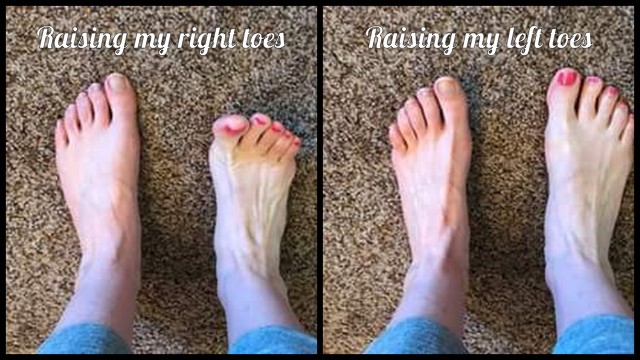
I had also had muscle knots in my calves previously that became much worse during my recovery. Stiff calves and muscle knots can cause pain in your foot so I do believe there was a period in my recovery where my PPT was healed but pain from my calves took over. I had this further proved by getting a second MRI to make sure my injury was healed before beginning physical therapy.
The feeling of walking on a pebble did go away … I think by January. This could have been caused by my bone edema, however, and not PPT.
Q: Did you tape through your entire recovery?
Hmm, here’s where my memory is failing me. I know the date I started taping my foot, (January 20, 2017, approximately four months after my injury occured,) but I don’t exactly remember when I stopped. Definitely by April. My best guess is late-March or early April, around three months total, give or take.
Now, the next question is …. was it necessary for me to tape for that long? That I don’t know since I didn’t receive my second MRI until May, 2017 and it’s unclear at what point, exactly, my PPT tear was healed.
Q: When you got the okay to run from your doctor, were you completely pain free at that point? I know you mentioned you started doing feet exercises from the Run Experience video.
No, I wasn’t completely pain-free as mentioned in my previous answer. Plus I was TERRIFIED of reinjury seeing as how second PPT’s are quite common! (Not trying to be negative, that’s just a reality, folks, and something I still think of.) I had become so accustomed to limping and favoring my foot that normal walking let alone running seemed impossible.
But my doctor didn’t mince words: I HAD to treat my foot as though it was normal again.
Doing the exercises from Run Experience was incredibly helpful although I did avoid the toe walking exercises plus I took it super slow at first. I also forced myself to stop limping with some help from my husband who would see me walking down the street and holler, “STOP LIMPING!”
He also taught me a trick that really helped: Squeeze my buttocks while walking because you can’t squeeze and limp at the same time. It really works!
I started to Beachbody’s PiYo Lower Body as well. Let me tell you, I FREAKED OUT when I first did a downward dog with all my weight on my flexed left foot. But afterward, my legs and feet felt better and with patience and slow progress, became strong again!
Q: How long did it take for you to go from when you started treating your PPT to when you became completely pain free? I’m close to 7 months from when I first wore the walking boot. I just wonder if I’m being too impatient. Do you remember how you felt at the 7 month mark?
I’ve already mentioned this but I can’t stress enough how thankful I am over getting a second MRI. This assured me that my PPT had healed and I was okay to slowly move forward with rehabilitation, knowing the aches was from stiffness and inflexibility rather than the tear.
Yes, each MRI was expensive and not covered by my insurance, but YOU ONLY HAVE ONE CHANCE TO HEAL. I was careful to do it right so I’d have a lifetime of running and now that it’s years later, those extra recovery months are nothing but mere blips in my past.
To better answer your question, I was still taping my foot and wearing Hokas, a carbon graphite insert and metatarsal pads at the seven month mark. I wasn’t cleared to run until June, approximately ten months after my injury.
Q: One of my major symptoms is pain while standing or walking barefoot. Did you experience anything like that?
This is difficult to answer since I have a high pain tolerance. (I delievered both my kids naturally and have gotten cavities filled without Novocaine.) So on a scale of 1 to 10, I’d say my pain was …. oh, a 3 to 4. It felt more like an annoying presence … like a raised bruise, but that could have been more from my bone edema, (inflammation.) I especially felt this “presence” in the morning when I first got out of bed or in the shower. I also felt a 7 to 8 level pain when pressing a thumb against my second metatarsal.
During my recovery, I never walked barefoot. For the first five to six months, I’d either wear my boot or Hokas with graphite insert and metatarsal pads. Near the end of my recovery, I wore Hoka sliders that have the same meta-rocker system or my Oofos Recovery Sandals that took pressure off the ball of my foot.
Q: You mentioned your 8 times a day calf stretching routine. I was just wondering how you did this and how long did you hold your calf stretches?
My doctor recommended doing basic lunging calf stretches, first with my leg back far and then closer with my pelvis tilted, holding for a 10 second count. You can find some other amazing stretches in this article. Keep in mind that it’s best to do a brief warmup first by marching in place and doing dynamic stretches since you never want to do static stretches with cold muscles.
As I’ve mentioned before, PiYo Lower Body is an amazing workout since it really stretches out your legs and has pyramid and pigeon poses, which felt great. Beachbody also has a yoga class specifically for runners, but I connected with PiYo more.
Q: Did your PPT fully resolve? Can you run 100%?
According to my second MRI, my tear has fully healed and I can run with no issues. Am I at the same capacity as before? No, but that’s per my choice. Rather than keep the same intensity, I have lowered my weekly mileage and take extended breaks after big races.
For example, after completing the WDW Marathon in January, 2019 and the Princess Half Marathon in February, I took a couple months off with just light runs here and there, focusing more on strength training with 80 Day Obsession instead. I’m the spring, I kept my mileage low – around ten miles per week, but now that I am training for the Marine Corps Marathon in October, I am upping my mileage.
I take these precautions to make keep my feet healthy and strong, ensuring me a lifetime of running. Is it necessary? I don’t know, but it’s the choice I’ve made and I’m comfortable with it.
Q: Did you ever try a cortisone shot?
No, I refused a cortisone shot when my first doctor suggested one because my gut told me it was a bad idea. Thank God I listened! I even had well-meaning friends who said, “just get the cortisone shot,” but I ignored that as well and followed my intuition.
According to my third doctor, cortisone is an outdated treatment for plantar plate tears and could lead to the ligament being ruptured. I know this firsthand by the MANY emails I’ve received from folks who’ve had horrible results from getting one.
Now, they can be helpful for some feet ailments. But before you let anyone put a needle in your foot, get an accurate diagnosis first!!
Q: Did your pain gradually subside or did it go away in steps?
Once I forced myself to stop babying my foot and started to gain flexibility in my calves and Achilles, the pain did subside. There are times when I do feel some pain again, however, when I don’t stretch or take the time to roll or massage my muscle knots with my CAS. (I was too cheap to by a BFF Body Buffer so I got a car polisher at Walmart for $20.00 and called it my cheap a** friend. I am considering investing in a BFF, however, because they’re AMAZING!!)
Q: What did you do to stay sane while recovering?
Quite often, I didn’t.
I had friends who supported me, praying for my recovery and understanding my frustrations.
I had friends who tried to be understanding but sometimes made me feel quilty for being depressed or for having bad moments.
I had friends who avoided the topic all together for whatever reason … maybe from their own fear of it happening to them.
Things got harder as the months progressed and it looked as though I’d never be able to run again. Running was my life. My social circle. Nearly all my friends are runners and I was a running blogger, for Gods sake.
But mostly, it was my identity.
The fear of losing this was cripling. Running also helped me end a lifelong battle with bulimia, seeing as how you can’t train for a marathon without proper nutrition. Gaining weight seriously put my mental health at risk and there were also times when people would say things that felt like a punch in the gut. Stuff like:
- Have you tried swimming/elliptical/cycling/yoga instead?
- At least now you have more time for other things.
- Have you gained any weight? (Why, yes, thanks for bringing that up.)
- Well, they do say that running is bad for your body.
- My brother-in-law had that same injury. He never ran again.
- Sucks you had to miss this year’s [insert race] but if it makes you feel any better, it wasn’t that great.
- I really missed you at the race but GOOD NEWS, I got a new PR!!!
- Maybe you needed a running break, anyway.
- Have you thought about racing as a hand cyclist instead?
- And the worst … Well, maybe you should think about creating a new identity.
Yes. I’ve heard every one of these comments plus more.
And I get it. The people who said those things had good intentions and I tried to take their comments with a graceful grain of salt. But I didn’t want a f***ing new identity. If that was the card I was eventually dealt … if that ended up being my only choice, then fine. I would deal. But that would be my choice and not something that needed to be suggested by someone else.
I remember getting on the elevator during the Broad Street 10-Miler in May 2017. I had signed up in hopes I’d be able to run it with friends by then but couldn’t, so my depression was at an all-time high. I still cheered, however, and had a total blast, (except for one brief low moment when my friends came back to the hotel wearing their medals. I tried my best to smile and be happy … but it was just too hard. I’m human. Not perfect.)
Anyway, I got on the elevator solo after cheering that morning with a man who noticed my running shoes and sign. “You’re not racing today?” he asked.
“No, I’m injured,” I said, bracing myself for yet another comment. But to my delight, he responded with…
“Man. That sucks.”
Those dealing with prolonged injuries are fully aware of how “that sucks” is just about the only thing we want to hear besides prayers for a speedy recovery. I freaking wanted to hug him.
Why am I including all of this? Because I don’t want to blow smoke up your rear by only saying, “hang in there and be positive.” Being injured sucks. It sucks, it sucks, it sucks, and while the Lord does put us through struggles for a reason and yes, there are worst things that could happen … it’s hard to remain positive and hopeful 100% of the time. So I want you to know that I understand every single frustration you are feeling right now. It sucks.
And I pray for your speedy recovery.
Getting back to the original question, for the most part, I managed to stay somewhat sane by still exercising, (with my doctor’s permission, of course.) I did a ton of cyling – both outdoors and on a stationary bike, making sure to keep the pedal at my arch rather than the ball of my foot. Wearing the graphite insert helped distribute the weight evenly rather than in one spot. (I was also always careful to dismount on my right, non-injured foot.) Be aware that cycling can cause your calves to tighten, so non-weight bearing stretches afterward is important.
Doing pilates and yoga on the floor, and then later, PiYo also helped … although in hindsight, it would have been good to do more. I continued to eat healthy in an effort to maintain my weight, but I wasn’t completely successful with that and still gained about eight pounds.
Taking a break from the running community was impossible since most of my friends are runners and I do have a fitness-based platform. (The show must go on.) In retrospect, however, still considering myself as an athlete and not giving up all hope did help. And yeah … I did my best to also stay positive and regard my injury as a timeout, not a life sentence.
Q: How did you decide you were well enough to run again? How long do you think I should wait?
I did not attempt to start running again until 1.) I had a second MRI that showed my injury had healed. 2.) I had clearance from my doctor, and 3.) I had rehabilitated, gaining strength in my injured foot and becoming more flexible. Attempting to run before these three things is, in my opinion, not wise.
Q: I am now at the point where I can walk in sneakers but I don’t know if it’s that I don’t have the strength to walk normally (especially on my left foot) or I’m so petrified of putting pressure on that joint that I’ll end up at square one again. I’m just so anxious/nervous about the ability to walk like a normal human being again. Any advice you may have at my stage?
I totally get this. I was terrified, too! Once you are cleared to run, however, you have to treat your foot normally again. Just don’t rush. Start by taking short, slow walks. Try some yoga or cycling. Take your time and ease into running slowly, pulling back if you feel any pain.
Taking it slow will be frustrating, but remember: you only have one chance to recover. You want to do so properly by not pushing yourself or doing too much too soon.
Q: About how many weeks/months was it from the time you started wearing your orthotics until you could run without pain or making it worse?
I had received my orthotics in last April and I wasn’t cleared to run until June. It wasn’t until around mid-July when I worked up to my first light run. During this time, I had to learn how to walk normally again as well as strengthen my foot by doing the stretches exercises above and the ones on Run Experience.
Be sure to follow the prescribed plan for breaking in and getting used to your custom orthodics. At first, they felt foreign and caused more pain, even though I started slowly by wearing them for only thirty minutes a day. I took a week off to recover and saw my orthotist again so he could trim them. After than, I then started to break them in slowly again and now, I can’t imagine running without them!
~~~~
So there you have it, everything I have and everything I’ve been asked regarding my partial plantar plate tear. My apologies if there are some inconsistencies. I tried my hardest to make sure my information was correct, but it has been a couple years since my recovery. And again, if you have the same injury … I’m praying for your speedy recovery! God bless and take care!
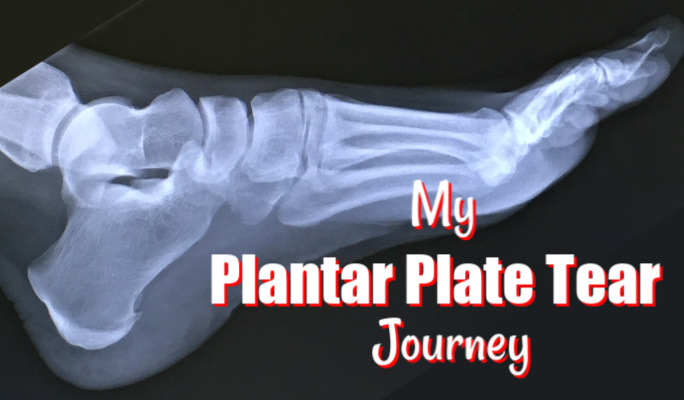

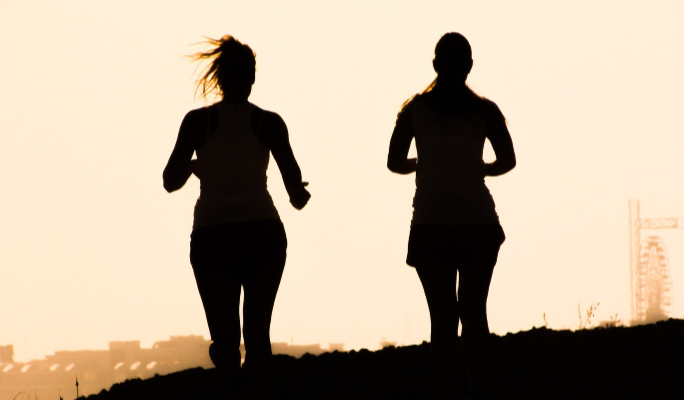
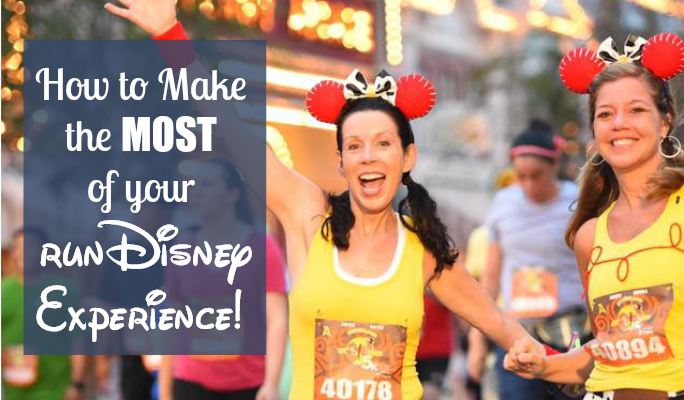
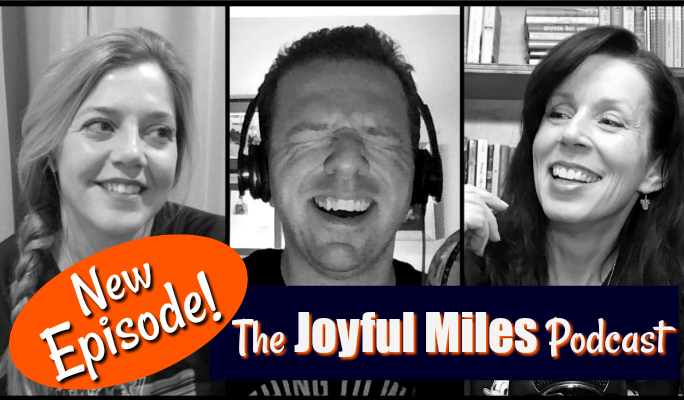

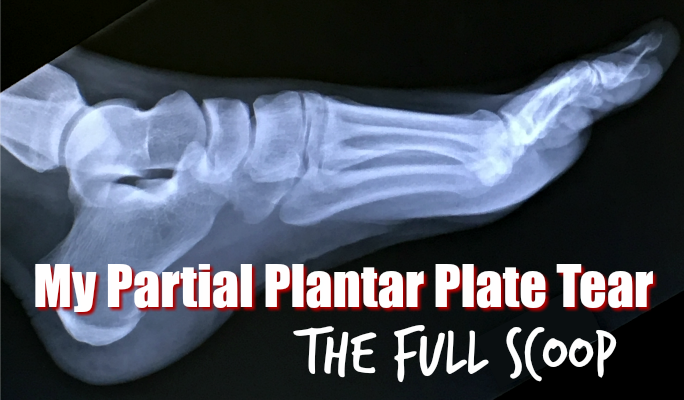
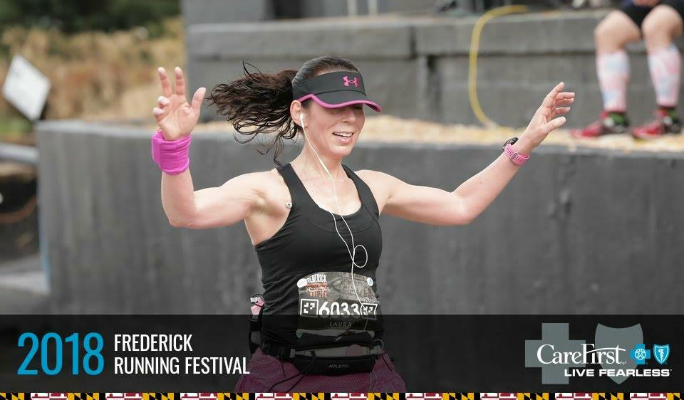



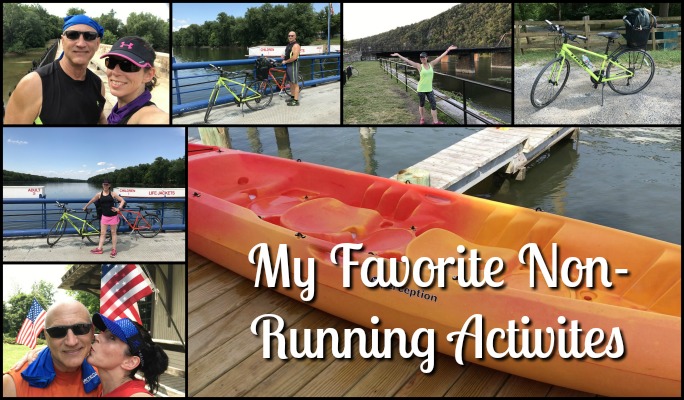





Absolutely been there with my ITBS. It took years and multiple doctors visits to be able to run, period. I knew too that i’d be dealing with that twinging pain, but I wanted to run so much. I didn’t want to cycle, I didn’t want to do yoga. I wanted to run. When I finally got to the point where I could run, I would get that twinging pain, and it wasn’t until the past couple years where I’ve had 2(!) 10k races pain free. The other two had pain and I pushed through.
Praying for your recovery!!
I have the same problem but think I need surgery. I have seen 4 different doctors and haven’t found the right one. Did you see Orthopaedic or podiatrist? Happy you are back to running. I can barely walk and can only walk with my Hokas.
Praying for your speedy recover, Sheri, and hope you’re back to normal very soon!!!!
I’m so glad I found your blog!! I’ve been wallowing in wine and self-pity since my PPT diagnosis and the horrific boot-thing my ortho installed on my foot. I originally got the MRI to rule out a stress fracture, and when the wet-read said no fracture, I kept running. I even won a local 5k! But then the radiologist report came back and said “degenerative plantar tear” and my ortho hauled my a** in in and strapped me in a boot. He’s got me scheduled for a platelet-rich-plasma injection a week from now … did you have one of those? and said no running for 4-6 weeks after the injection. I’m leveled. But truly grateful to read your story. I’m 45 and this summer I found the best fitness of my life… so frustrating that this happened and derailed my running joy.. 🙁
I have been plagued with a plantar plate injury for a year. I am 58 years old and a high heel wearer for 35 years . I am also active and exercise regularly. So far I have been to 4 doctors and heading to Atlanta to see a 5th doctor in mid-December to look at surgery. My exercise has been changed to swimming this year. I have so much pain in the ball of my foot I am considering surgery. I have been taping for months and I recently purchased orthotics for my shoes. I am curious where you ladies are right now in your journey with this. Susan
How long after the tear were you able to lunge (flexing your plantar plate behind you?) or hold a plank (flexing your toes beneath you)?
My injury happened at the end of January and I’ve done the hokas/ orthotics thing, and I started calf strengthening heel raises two weeks ago and am pain free doing it.
I am desperate to get back to doing my Pilates classes, but feel so nervous about putting pressure through the plantar plate by lunging or planning.
Thank you so much for sharing your journey. I got my mri back Wednesday and it was a partial plantar plate tear and not the Morton’s Nueroma the drs were expecting. Having already recovered from two other injuries in the past 3 years and your article was a breath of encouragement at a difficult moment.
I’m so glad my article helped!! And I’m happy you got an MRI for a proper diagnosis. That’s key! Praying and hoping for your speedy recovery … take care of yourself and be patient! 🥰
Thank you so much for your website and for telling your story. It is inspirational. I’m not sure of my diagnosis yet…I see a podiatrist soon, but from the looks of it, I may have a sprain or very early stage partial plantar tear. I’ve done the icing and resting thing but I won’t be happy until my foot is 100%. I’m thinking the taping and shoes would be a big help, but I need the confirmation of an accurate diagnosis. Man, I too love running and would so hate to permanently give it up.
I know this is way after the fact. One question you didn’t answer. Did your MRIs use dye or not? My Dr has scheduled an no-dye MRI. However, reading online, I am seeing another type of MRI where they I ject dye into the joint to see if leaks. Don’t want to waste my money on something that isn’t effective at capturing the injury
Hey, Ryan! No, mine was a no-dye, it was able to read my partial tear without one. So sorry you’re dealing with a foot injury!! Sending lots of healing vibes your way!
Laura,
Thank you so much for writing this. I had my plantar plate tear early in the pandemic and have been dealing with it since. It was very difficult for me to seek medical help after my initial diagnosis, and I was never able to get a custom orthotic insert. Needless to say, my recovery has been slow and agonizing, but when I eventually found this blog it gave me so much hope. Thanks again
On my latest MRI, it showed that my MPJ PPT had finally fully healed, but there was still some “edema.” It didn’t refer to it as bone marrow edema, and it is thankfully mild. I’m wondering: what was your protocol once your MRI showed that your tear had healed? Was it just taking breaks? did you occasionally use your orthotics or met pads?
3 questions: I’m having the same “V” issue, & have had 3 MRI’s & a CAT Scan & two podiatrists have no idea what happened to me. All this occurred after an unremarkable jog/walk. Did you get bursitis when you injured your foot and bone marrow edema of the metatarsals? Did they tell you what caused it?
Laura,
I know it has been years since your injury. I’m hoping you are still able to run & your foot is still doing well! I just wanted to say that I really appreciate you telling your PPT story. Your posts have helped me more than the two doctors I’ve seen so far. I’ve read so much online & every website seems to recommend something different. It’s only been a little over 6 weeks for me since my foot injury but I’m very anxious to be able to walk normally again. I’m not a runner but I enjoy walking & hiking. I also have a job where I’m on my feet for 10 hours. My injury happened last New Year’s when I tripped walking down stairs and bent the first three of my toes backward on my left foot before I fell. I have had some off & on foot pain most of my life due to having flat feet, etc. but I knew the pain from this injury was different. So after two doctors, an x-ray & an MRI I have a PPT of my big toe & ligament sprains of my 2nd & 3rd toe. I just got out of a walking boot & bought my first Hokas & also a carbon insert. But the ball of my foot still hurts & swells when I try to put much weight on it or walk. It’s frustrating because I have no idea when I’ll be able to go back to work or even just walk without pain or a limp. Plus my family & I have a Disney trip already scheduled for next month. I don’t know if I’ll be able to walk at Disney! I was just wondering how long from the time of your injury could you walk again without much pain? Thanks again! Your blog & website have been so helpful to me!
Hi,
I know this is way after the fact, but was hoping you might be able to give some advice. You said above that when you went back to running you still felt pain? How did you know if it was OK to run through this pain, rather than continue resting your foot?
I think I’m in a similar spot to where you were when you started up running. 6.5 months since the injury. An MRI 3 months ago showed no tear, only minor bone edema. Since then I went to PT, got custom insoles, have been resting, and icing, and doing exercises. Initially starting to bear weight on the foot helped. But now healing has been stalled out for about 1.5 months.
Hey, Ryan, my apologies for the late response … this blog has been in hiatus for some time and I don’t have concrete plans on whether or not to continue.
I’m so sorry you’ve been dealing with such a frustrating injury! It really sucks but please keep seeing the light on the horizon … after my long healing journey, I have been running pain free now for years!
And I will modify my previous posts in order to be more clear about my lingering pain. During my healing journey, my Achilles, calves, and hamstrings, (well … everything, LOL,) became tight and inflexible which my doctor said can cause pain in your feet, so I did arrive at a difficult stage where the healing had led to other issues that needed to be figured out. He recommended calf stretches and working on my flexibility and yes, there did come a point where he told me I needed to stop being so afraid to use my foot. Not wearing the same kind of footwear every day also helped, using different foot muscles and gaining strength in my feet again.
Please take note that his was after a new MRI had shown that my tear was healed and that nothing in this comment is medical advice since I’m not a doctor or someone in a medical field. I’m just sharing my experience. And it was hard … the first time I did downward facing dogs in yoga freaked me out but the more I did, the better I felt!
So again, be sure to discuss with your doctor how to move out of this awful stalled-out phase. Wishing you the best of luck!
Thanks for the reply. Glad to hear you haven’t re-injured. That’s one thing I’ve begun to worry about as this keeps going on and on: That it just won’t fully heal. Hoping I can actually get back to exercise someday
That was my worry as well, especially since it took me nearly a year to get back to normal. Best of luck and I’m sending you lots of healing vibes!!
Hello! Thank you for sharing your experience. I do not have a tear but the ortho believes the bursitis and ball of foot pain I’m experiencing is from lack of strength and degeneration in my 2nd and 3rd plantar plates. This was observed on my MRI. He taped my toes and so far it’s provided tremendous relief. I’m curious to know if you slept with your toes taped? I used KT tape and it’s not the easiest to remove every evening.
Hmm, that’s a good question because I don’t remember, LOL! I’m fairly certain I removed it at night, just to give my toes a break. (I also didn’t use KT tape. I used regular medical adhesive tape. Best of luck and sending lots of healing vibes your way!!
Hi Laura, thanks so much for sharing, that’s really helpful! May I ask if you had any time period of Non-weight bearing when you were in the walking boot? With non-weight bearing, I can’t support myself for daily living, so it’s hard. Thank you!